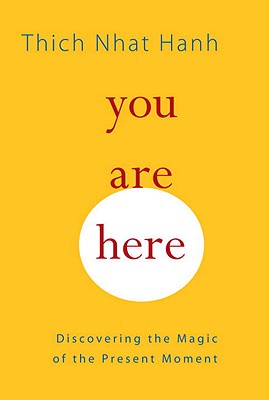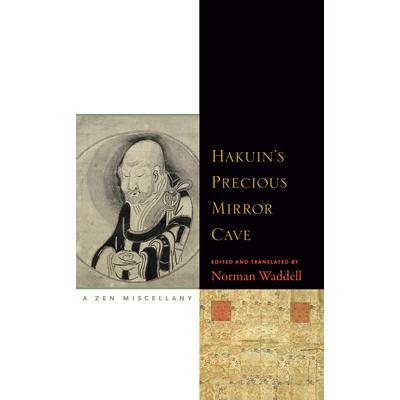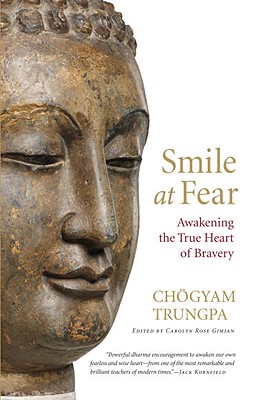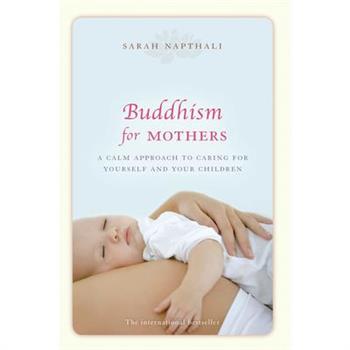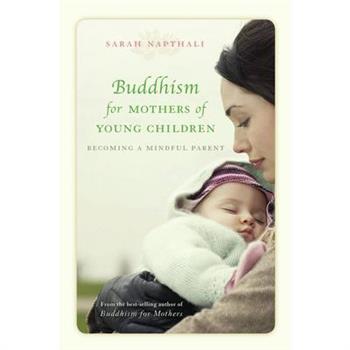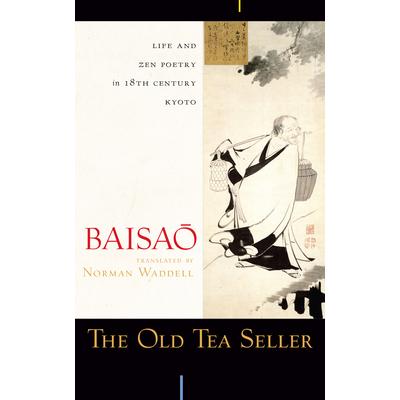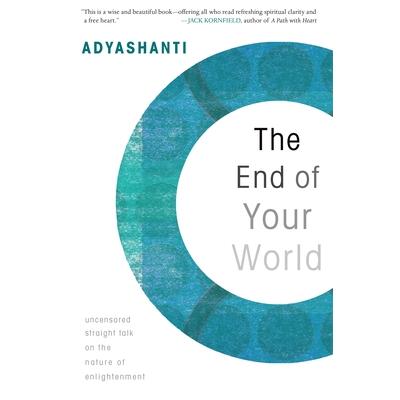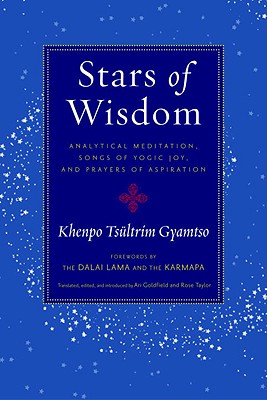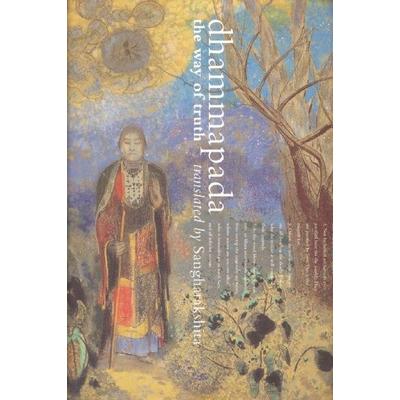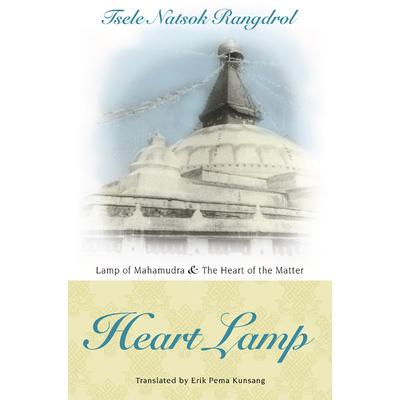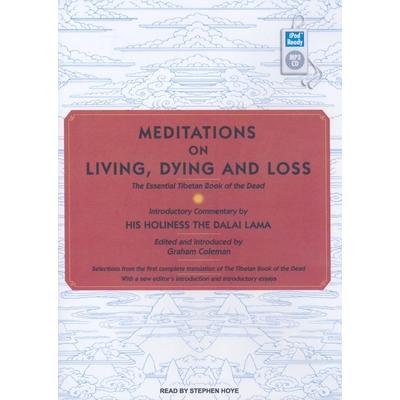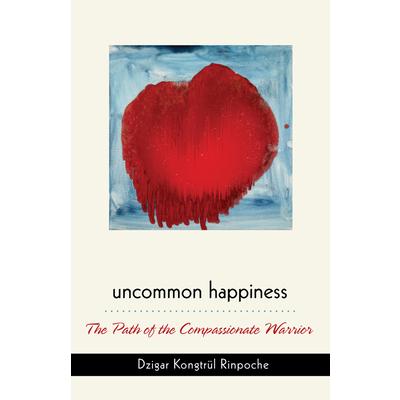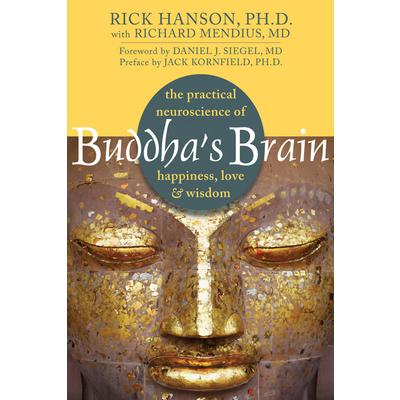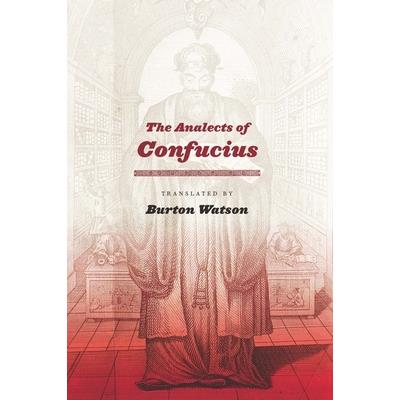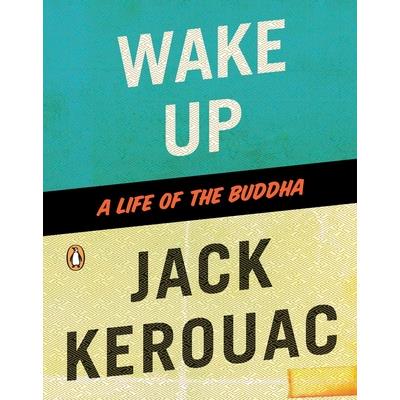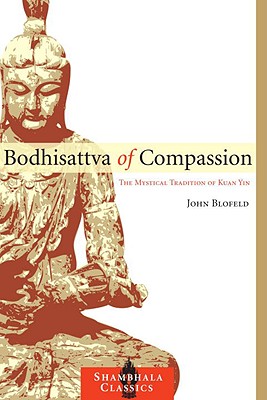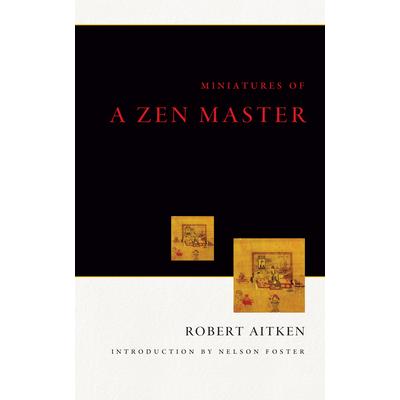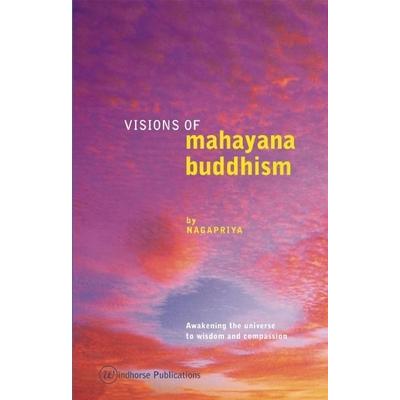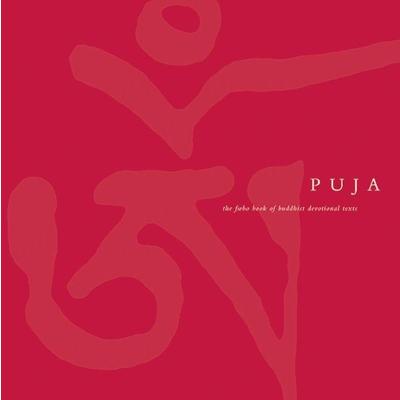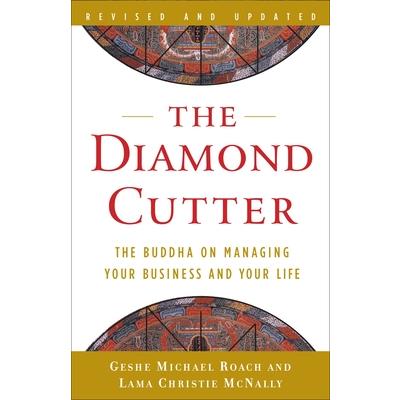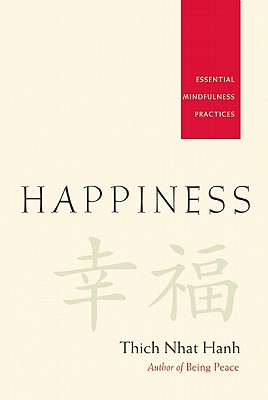The Wisdom of Insecurity
An acclaimed philosopher shows us how--in an age of unprecedented anxiety--we can find fulfillment by embracing the present and living more fully in the now. He is "the perfect guide for a course correction in life" (from the Introduction by Deepak Chopra). The brain can only assume its proper behavior when consciousness is doing what it is designed for: not writhing and whirling to get out of present experience, but being effortlessly aware of it. Alan Watts draws on the wisdom of Eastern philosophy and religion in this timeless and classic guide to living a more fulfilling life. His central insight is more relevant now than ever: when we spend all of our time worrying about the future and lamenting the past, we are unable to enjoy the present moment--the only one we are actually able to inhabit. Watts offers the liberating message that true certitude and security come only from understanding that impermanence and insecurity are the essence of our existence. He highlights the futility of endlessly chasing moving goalposts, whether they consist of financial success, stability, or escape from pain, and shows that it is only by acknowledging what we do not know that we can learn anything truly worth knowing. In The Wisdom of Insecurity, Watts explains complex concepts in beautifully simple terms, making this the kind of book you can return to again and again for comfort and insight in challenging times. "Perhaps the foremost interpreter of Eastern disciplines for the contemporary West, Watts had the rare gift of 'writing beautifully the unwritable.'" --Los Angeles Times
Im Osten des Meeres
English summary: Recent studies on Japanese Zen are often based on a mythological reading of its history. Thus, historical forms that run contrary to today's understanding of Zen are marginalized. Steffen Doll dedicated himself to one of these forms, namely the early phase of Japanese Zen. In addition to the institutional and ideological development of the so-called Five Mountains (gozan), he notes in particular the translation processes that were used in adapting the Chinese Chan for the Japanese context. These processes take place in the biographies and literary works of the Chinese immigrant monk of the 13th and 14th Centuries. German text. German description: Bisherigen Studien zum japanischen Zen liegt haufig eine mythologisierende Lesung seiner Geschichte zugrunde. Dadurch werden historische Erscheinungsformen, die dem heutigen Selbstverstandnis des Zen widersprechen, marginalisiert. Steffen Doll widmet sich einer dieser Erscheinungsformen, namlich der Fruehphase des japanischen Zen. Neben der institutionellen und ideologischen Entwicklung der sogenannten aFuenf Berge (gozan) nimmt er insbesondere die Translationsprozesse in den Blick, mittels derer das chinesische Chan fuer den japanischen Kontext adaptiert wurde. Konkretisiert finden sich diese Prozesse in den Biographien und im literarischen Schaffen der chinesischen Emigrantenmonche des 13. und 14. Jahrhunderts.
You Are Here
Cut through the busyness and anxieties of daily life to discover the simple happiness of living in the present moment, as taught by a world-renowned Zen monk In this book, Thich Nhat Hanh--Zen monk, author, and meditation master--distills the essence of Buddhist thought and practice, emphasizing the power of mindfulness to transform our lives. But true mindfulness, Hanh explains, is not an escape. It is being in the present moment, totally alive and free. Based on a retreat that Thich Nhat Hanh led for Westerners, You Are Here offers a range of effective practices for cultivating mindfulness and staying in the present moment--including awareness of breathing and walking, deep listening, and skillful speech. These teachings will empower you to witness the wonder of life and transform your suffering, both within and outside you, into compassion, tenderness, and peace. As Thich Nhat Hanh declares, "the energy of mindfulness is the energy of the Buddha, and it can be produced by anybody." It is as simple as breathing in and breathing out.
Wildmind
"Of great help to people interested in meditation and an inspiring reminder to those on the path."Joseph Goldstein, co-founder of the Insight Meditation Society and author of One Dharma: The Emerging Western Buddhism"Bodhipaksa has written a beautiful and very accessible introduction to meditation. He guides us through all the basics of mindfulness and also loving-kindness meditations with the voice of a wise, kind, and patient friend."-Dr. Lorne Ladner, author of The Lost Art of CompassionThe aim of Buddhist meditation is to clear away the "defilements" so that we can experience ourselvesmore deeply and more trulyin our primordial purity, clarity, and freedom of mind. Meditation helps us to cut through the agonizing clutter of superficial mental turmoil and allows us to experience more spacious and joyful states of mind. It is this pure and luminous state that I call your Wildmind.From how to build your own meditation stool to how a raisin can help you meditate, this illustrated guide explains everything you need to know to start or deepen your meditation practice. This bestseller is in a new handy format and features brand-new illustrations.Bodhipaksa is a Buddhist practitioner, writer, and teacher, and he is the founder of www.wildmind.org, an online meditation resource. He lives in New Hampshire with his family and conducts classes at Aryaloka Buddhist Center in Newmarket, New Hampshire.
Hakuin’s Precious Mirror Cave
From a legendary translator of sacred texts, this rich and various gathering of the writings of Hakuin will be important to seasoned practitioners as well as attractive to newcomers to Zen and spiritual seekers of all faithsThe two great streams of Zen Buddhism are the Soto sect, known as the School of Silent Illumination, and the Rinzai school of rigorous koan study. Dogen established Soto Zen in Japan, and his work is widely known in the West with many of his books translated into English. Hakuin is credited with the modern revival of the Rinzai sect and is its most important teacher. His life has been a great inspiration to the students and practitioners of Zen in the West, and his writings offer great authority and practical application. Norman Waddell has devoted a large part of his life to translating and publishing work by and about Hakuin. This collection of six diverse and independent works contains five pieces never before translated into English, some of which have been--until quite recently--unknown, even in Japan.
Ten Pillars of Buddhism
The ten pillars of Buddhism are ten ethical principles, such as generosity, truthfulness, or compassion, that together provide a comprehensive moral guide. Sangharakshita highlights the depth of these apparently simple teachings by first considering them collectively and then individually.
The Mirror of Mindfulness
This book main idea is that intrinsic to the heart, mind and spirit in every human being is an identical essence which can be realized. This realization makes any man or woman a Buddha. The focus of this book is the method of how to implement that through a system of training which is of timeless value, and not bound by cultural limitations. The timeless truth it conveys is as meaningful for a Westerner today as it was in India and Tibet.During the centuries this system of effortless training has been applied by people from all any occupation -- tailers and kings, monks and business men - and provided them with a simple method to not only withstand the changes of life but also to transcend them. Like the waves on an ocean, the ups and downs, joys and sorrows, we meet in our lives can be seen as movements in the ocean, giving true peace and room for caring for others.I will be hard to find another book which is as concise as Heart Lamp.The audience is the steadily increasing followers of Buddhism in the Americas, Europe and Asia, which is grown in the wake of Tibetan masters' teaching outside of Tibet. Heart Lamp is unique in that its translator worked closely with several of the most respected meditation masters of recent times and was able to receive knowledge from the "lifeblood" of the living tradition.Heart Lamp is unique in its brevity without losing the depth of a true spiritual lineage the training in which can bring about enlightenment in a single lifetime. And, it is being used as the textbook during meditation retreats around.
Confessions of a Gypsy Yogini
Confessions of a Gypsy Yogini is a tale of experience through mistakes, learning the hard way. It is a guidebook to help find ourselves, offering a fresh approach to traditional teachings in a non-adulterated way, adapted to modern characters. Presented within the Buddhist framework, it will draw the reader closer to seeing things as they truly are, assisting in ascertaining and validating our inherent beauty and combating any feeling of worthlessness while acknowledging anxiety as a part of the path. To overcome negative perceptions, we need to study our confusion and find tools to clear some of it away. Learning how to meditate begins the road to healing and training in various simple formulas directs us to becoming better people. We can meet life's challenges with humor and triumph over them. Included are several opinions of major Tibetan Teachers: Confessions of a Gypsy Yogini is a vivifying account of the ambrosia-like Buddhist path with brilliant imagery and clear voices of many renowned Masters recorded by the author, who lived at the feet of one of the greatest Tibetan Masters of meditation for 17 years at the epicenter of unfolding events of Dharma that crossed many oceans. May this volume reach many to ignite the light of love and wisdom - the true meaning of Dharma - in the hearts of many.Tulku Thondup Rinpoche Marcia [Dechen Wangmo] has followed many great lamas, some of the best of this century. Her account of her experience as an American amidst this older generation of lamas is quite important for Dharma students from the West. Dzongsar Khyentse Rinpoche
Smile at Fear
Insights and strategies for claiming victory over fear, from "one of the most remarkable and brilliant teachers of modern times" (Jack Kornfield, author of A Path with Heart) Many of us, without even realizing it, are dominated by fear. We might be aware of some of our fears--perhaps we are afraid of public speaking, of financial hardship, or of losing a loved one. Ch繹gyam Trungpa shows us that most of us suffer from a far more pervasive fearfulness: fear of ourselves. We feel ashamed and embarrassed to look at our feelings or acknowledge our styles of thinking and acting; we don't want to face the reality of our moment-to-moment experience. It is this fear that keeps us trapped in cycles of suffering, despair, and distress. In Smile at Fear, Ch繹gyam Trungpa offers us a vision of moving beyond fear to discover the innate bravery, trust, and delight in life that lies at the core of our being. Drawing on the Shambhala Buddhist teachings, he explains how we can each become a spiritual warrior--a person who faces each moment of life with openness and fearlessness.
Buddhism for Mothers
Firmly grounded in the day-to-day reality of being a mother, this revolutionary guide discusses Buddhist teachings as applied to the everyday challenges of bringing up children Teaching how to become a calmer and happier mother through Buddhist teachings, this enlightened book helps mothers achieve their full potentials to be with their children in the all-important present moment, as well as to gain the most possible joy out of being with them. Parenthood can be a time of great inner turmoil for a woman--yet parenting books invariably focus on nurturing children rather than the mothers who struggle to raise them. This book is different; simply put, it's a book for mothers. Using Buddhist practices, Sarah Napthali offers ways of coping with the day-to-day challenges of motherhood. These ways also allow space for the deeper reflections about who we are and what makes us happy. By acknowledging the sorrows as well as the joys of mothering, Buddhism for Mothers can help enable a shift in perspective--so that a mother's mind can guide them through the day instead of dragging them down. This is Buddhism at its most accessible, applied to the daily realities of ordinary parents.
Birmanische Handschriften
Der siebte Teil der Katalogreihe setzt die Beschreibung von Handschriften in birmanischer Schrift aus dem Besitz der Staatsbibliothek zu Berlin - Preussischer Kulturbesitz - (SBB) fort. Die 175 Palmblatt-Kodizes enthalten vorwiegend Texte aus verschiedenen Bereichen der buddhistischen Literatur in Pali, haufig erganzt durch Wort-fur-Wort-Ubersetzungen ins Birmanische (Nissayas) oder ausfuhrlichere birmanische Kommentare. Daruber hinaus finden sich aber auch originar birmanische Texte zu Religion, Ordensrecht, Medizin und Magie, die als wertvolle Dokumente der Kulturgeschichte Myanmars/Birmas anzusehen sind. Die Datierungen reichen von 1761 bis 1917 A.D. Der Einleitung ist eine Ubersetzung ins Englische beigefugt.
Buddhism for Mothers of Young Children
From the author of the acclaimed Buddhism for Mothers, a guide to discovering the path to meaningful, spiritual, and satisfying motherhood A combination of personal narrative and stories gathered from mothers, this guide shows how spiritual and mindful parenting can help all mothers--Buddhists and non-Buddhists--be more open, attentive, and content. By guiding mothers on a spiritual path, this evocation also helps them cultivate wisdom, open-heartedness, and a better understanding of themselves and their children. The Buddhist teachings and principles help answer questions that all mothers face, especially those with young children: Who are my children? Who am I? How can I do my best by my children and myself? What to do about all that housework? and Is this all? Written in a clear and engaging style, this warm and simple meditation facilitates parenting with awareness, purpose, and love.
The Old Tea Seller
Poet, Zen Buddhist priest, renowned thinker, and seller of tea -- Baisao was all of these things, as well as being a bit of an eccentric. Known to carry large wicker baskets filled with tea utensils through the streets and surrounding hills of Japan's capital, Baisao set up shop wherever he ended up and brewed tea for those who came to enjoy the scenery with him. Establishing a quiet, simple life, Baisao spent his final years composing poetry, brewing tea, and teaching Zen, in the process becoming a well-loved figure. These poems, memoirs, and letters tell us more about this endearing person and trace his long life's profound spiritual journey. This comprehensive translation includes nearly all of Baisao's writings, giving us a deep look at this remarkable man.
The End of Your World
More and more people are waking up spiritually. And for most of them, the question becomes: Now what? "Information about life after awakening is usually not made public," explains Adyashanti. "It's most often shared only between teachers and their students." The End of Your World is his response to a growing need for direction on the spiritual path. Consider this Adyashanti's personal welcome to "a new world, a state of oneness."Adyashanti begins by describing the "I got it/I lost it" phenomenon that perplexes so many of his students--the fluctuation between what he calls "nonabiding" awakening, and the ultimate state of "abiding" enlightenment. With straight talk and penetrating insight, Adyashanti then points out the pitfalls and cul-de-sacs that "un-enlighten" us along the journey, including the trap of meaninglessness, how the ego can "co-opt" realization for its own purposes, the illusion of superiority that may accompany intense spiritual breakthroughs, and the danger of becoming "drunk on emptiness.""Full awakening comes when you sincerely look at yourself, deeper than you've imagined, and question everything," teaches Adyashanti. The End of Your World is your invitation to join Adyashanti for an honest investigation of what you really are--and how to live once you discover it.
An Anthology of Buddhist Tantric Songs
The subject of this study is a small collection of songs known as Caryagiti, 'songs of the mystic path', or literally 'songs of the proper way of action', published by Hariprasad Sastri in 1916. These songs hold a unique place in India's spiritual and literary heritage, yet in many ways they have been imperfectly understood. This study clarifies many points that have hitherto remained obscure and provides a fresh and deeper insight into their structure and contents. The first edition was quickly sold out. The present edition is slightly revised, and the songs themselves are printed in greytone to distinguish them from the critical apparatus used in analysis and commentaries.
The Diamond Sutra
Written more than 25 centuries ago, the Diamond Sutra is the first text to record the Buddha's own teachings, and it remains one of the most popular. One day, after the Buddha finishes his daily walk to collect alms, a senior monk steps forth to ask how he can best help humanity. Buddha responds, and thus begins a dialogue regarding the nature of perception. Renowned spiritual teacher Osho offers his unique interpretation of the Buddha's words, writing in an easy, humorous, and conversational style that makes even the most complex ideas understandable.
Entrance to the Great Perfection
Blending contemporary and traditional perspectives, this groundbreaking work offers guidance on the profound foundational practices of the Great Perfection. It contains classic commentaries by the renowned Tibetan masters Jigme Lingpa and Jamyang Khyentse Wangpo, alongside a lively contemporary discussion by filmmaker, author, and spiritual teacher Dzongsar Jamyang Khyentse that discusses how to incorporate these ancient practices into the fast-paced lifestyle of the Western world. Also included are a lengthy introduction to the world of Tibetan Buddhism and its meditative practices, as well as the long and short preliminary practice liturgies and numerous appendices on the nine yanas and other topics. The ng繹ndro or preliminary practice is treasured in the Ancient School of Tibetan Buddhism as vital for effecting a profound inner transformation and as a foundation for the very highest teachings of the Great Perfection, or Dzogchen. In particular, the Longchen Nyingtik ng繹ndro--revealed by the great saint Jigme Lingpa following a series of visions in which he was blessed by the omniscient Longchen Rabjam and received the transmission of his wisdom mind--has long been cherished by followers of all traditions on account of its power, depth, and poetic beauty.
Stars of Wisdom
Tibetan Buddhist master Khenpo Ts羹ltrim Gyamtso is known for his joyful songs of realization and his spontaneous and skillful teaching style. In this book he explains how to gain clarity, peace, and wisdom through step-by-step analysis and meditation on the true nature of reality. He also introduces readers to the joy and profundity of yogic song, and reveals the power of aspiration prayers to inspire, transform, and brighten our hearts.
Dhammapada
Experiences are preceded by mind, led by mind, and produced by mind. If one speaks or acts with a pure mind, happiness follows like a shadow that never departs.One of the seminal texts in the Buddhist literary canon, the Dhammapada presents the timeless wisdom of the Buddha. This edition is introduced and translated by the founder of the Friends of the Western Buddhist Order (FWBO) and is annotated to help the reader gain a deeper understanding.Sangharakshita is the founder of FWBO, a worldwide Buddhist movement. He spent many years living as a monk in India and studying Buddhism. With a lifetime of teaching experience, he is the author of over forty titles published by Windhorse Publications.
Heart Lamp
This book main idea is that intrinsic to the heart, mind and spirit in every human being is an identical essence which can be realized. This realization makes any man or woman a Buddha. The focus of this book is the method of how to implement that through a system of training which is of timeless value, and not bound by cultural limitations. The timeless truth it conveys is as meaningful for a Westerner today as it was in India and Tibet.During the centuries this system of effortless training has been applied by people from all any occupation -- tailers and kings, monks and business men - and provided them with a simple method to not only withstand the changes of life but also to transcend them. Like the waves on an ocean, the ups and downs, joys and sorrows, we meet in our lives can be seen as movements in the ocean, giving true peace and room for caring for others.I will be hard to find another book which is as concise as Heart Lamp.The audience is the steadily increasing followers of Buddhism in the Americas, Europe and Asia, which is grown in the wake of Tibetan masters' teaching outside of Tibet. Heart Lamp is unique in that its translator worked closely with several of the most respected meditation masters of recent times and was able to receive knowledge from the "lifeblood" of the living tradition.Heart Lamp is unique in its brevity without losing the depth of a true spiritual lineage the training in which can bring about enlightenment in a single lifetime. And, it is being used as the textbook during meditation retreats around.
Life With Full Attention
Each moment of mindfulness creates the opportunity for greater spaciousness and joy. In Life with Full Attention, readers will learn to really relish pleasures and turn gently inward in difficult times to gain a more profound depth of experience.In this eight-week course in developing mindfulness, Maitreyabandhu gently guides readers, teaching them how to draw closer attention to experience, whether taking a shower or eating a meal, watching the rain or a sunset. With each week, he introduces a different aspect of mindfulness--among them awareness of the body, feelings, thoughts, and the environment--and recommends a number of simple practices, from trying out a simple meditation to reading a poem. Featuring personal stories, examples, and tempting suggestions, this book provides both a starting point and a great reference.Mindfulness is a quality that enhances all experience, whether mundane or extraordinary. By applying this ancient Buddhist wisdom, Maitreyabandhu shows how we can steal back the lost moments of life.An experienced teacher of mindfulness and meditation, Maitreyabandhu has been practicing Buddhism for over twenty years.
Uncommon Happiness
Dzigar Kongtrul guides us through intelligent reasoning to identify our deluded perception of a truly existing self and shows us the key to awakening from this fundamental confusion. Rinpoche's brilliant commentary on the classical Indian Buddhist text, The Way of the Bodhisattva by Shantideva is a testament to this inspiring teacher's compassionate and compelling style. Uncommon Happiness is saturated with advice from an adept practitioner of the Buddhist Path. By expounding the essential meaning of the engaged Buddhism and introducing skillful methods to utilize along the way, he reveals our innate wisdom mind and challenges us to meet and employ our intrinsic enlightened capacity.In this extraordinary book, we have the unique opportunity to connect with a realized teacher, renown for his compassion and kindness, who skillfully teaches us how to reach that same level of conviction and certainty in our self. This clarification overflows with the genuine delight and humanity Dzigar Kongtrul Rinpoche embodies. These qualities transcend time, race, and place and are universal principles for all people to live by.Here is a combination of primordial notions expounded in the 8th century and practiced throughout the world till the present time and a modern interpretation pertinent to contemporary audiences. These values include loving kindness, compassion, joy and impartiality as well as generosity, patience, discipline, morality, diligence, peaceful abiding and intelligence. Instructions to engage in these trainings are presented with clear and precise language, easy to comprehend and apply.
Buddha’s Brain
If you change your brain, you can change your life.Great teachers like the Buddha, Jesus, Moses, Mohammed, and Gandhi were all born with brains built essentially like anyone else's--and then they changed their brains in ways that changed the world. Science is now revealing how the flow of thoughts actually sculpts the brain, and more and more, we are learning that it's possible to strengthen positive brain states.By combining breakthroughs in neuroscience with insights from thousands of years of mindfulness practice, you too can use your mind to shape your brain for greater happiness, love, and wisdom. Buddha's Brain draws on the latest research to show how to stimulate your brain for more fulfilling relationships, a deeper spiritual life, and a greater sense of inner confidence and worth. Using guided meditations and mindfulness exercises, you'll learn how to activate the brain states of calm, joy, and compassion instead of worry, sorrow, and anger. Most importantly, you will foster positive psychological growth that will literally change the way you live in your day-to-day life.This book presents an unprecedented intersection of psychology, neurology, and contemplative practice, and is filled with practical tools and skills that you can use every day to tap the unused potential of your brain and rewire it over time for greater well-being and peace of mind.
The Analects of Confucius
Compiled by disciples of Confucius in the centuries following his death in 479 B.C.E., The Analects of Confucius is a collection of aphorisms and historical anecdotes embodying the basic values of the Confucian tradition: learning, morality, ritual decorum, and filial piety. Reflecting the model eras of Chinese antiquity, the Analects offers valuable insights into successful governance and the ideal organization of society. Filled with humor and sarcasm, it reads like a casual conversation between teacher and student, emphasizing the role of the individual in the attainment of knowledge and the value of using historical events and people to illuminate moral and political concepts.Confucius's teachings focus on cultural and peaceful pursuits and the characteristics of benevolent and culturally distinguished government. He also discusses ancestor worship and other rites performed for the spirits of the dead. The single most influential philosophical work in all of Chinese history, The Analects of Confucius has shaped the thought and customs of China and neighboring countries for centuries. Burton Watson's concise translation uses the pinyin romanization system and keeps explanatory notes to a minimum, yet his intimate knowledge of the Confucian tradition and precise attention to linguistic detail capture the original text's elegance, cogency, and wit.
Wake Up
"[Wake Up] contributes significantly to the fascinating picture of Kerouac's spirituality, revealing the depth of Kerouac's identification with the Buddha."--The Beat Review "The long, streaming style makes the book majestic and something that you absorb in one sitting, like a symphony."--Robert A. F. Thurman, from the Introduction In the mid-1950s, lifelong Catholic Jack Kerouac became fascinated with Buddhism, an interest that had a profound impact on his ideas of spirituality and later found expression in such works as Mexico City Blues and The Dharma Bums. Originally written in 1955, Wake Up is Kerouac's retelling of the life of Prince Siddhartha Gotama, who as a young man abandoned his wealthy family and comfortable home for a lifelong search for enlightenment. Distilled from a wide variety of canonical scriptures, Wake Up serves as both a penetrating account of the Buddha's life and a concise primer on the principal teachings of Buddhism. This edition includes an insightful introduction by Buddhist scholar Robert Thurman addressing Kerouac's engagement with Buddhism in his work and his life.
Bodhisattva of Compassion
She is the embodiment of selfless love, the supreme symbol of radical compassion, and, for more than a millennium throughout Asia, she has been revered as "The One Who Hearkens to the Cries of the World." Kuan Yin is both a Buddhist symbol and a beloved deity of Chinese folk religion. John Blofeld's classic study traces the history of this most famous of all the bodhisattvas from her origins in India (as the male figure Avalokiteshvara) to Tibet, China, and beyond, along the way highlighting her close connection to other figures such as Tara and Amitabha. The account is full of charming stories of Blofeld's encounters with Kuan Yin's devotees during his journeys in China. The book also contains meditation and visualization techniques associated with the Bodhisattva of Compassion, and translations of poems and yogic texts devoted to her.
Miniatures of a Zen Master
For more than four decades, Robert Aitken Roshi has taught thousands of people the Buddhist practice of Zen meditation, and has led hundreds through their practice of the study of traditional koans. He has authored more than a dozen books, including a celebrated appreciation of Basho's haiku; volumes of commentary on sacred texts; works on ethics, daily life, and social action; and one of the best-loved introductions to Zen Buddhism, Taking the Path of Zen. After a long and remarkable life--he will be 91 years old when this collection is published--Aitken Roshi offers a collection of 266 short texts. Some are clearly parables; others are simple stories, quotations, memories, and commentaries. Resembling Benjamin Franklin's Almanac or the epigrams of Chamfort as much as it does work from ancient sages, this collection of "miniatures" distills a life devoted to teaching and awareness. Any person living a considered life, whether secular humanist or religious seeker, will find this a book of rich inspiration.
Visions of Mahayana Buddhism
"A very helpful introduction and overview of this complex, fascinating tradition."--David R. Loy, author of Money, Sex, War, KarmaHere is a rare overview of the second of the three great phases of Buddhism that blossomed across Asia, particularly in China, Korea, and Japan.In this detailed exploration of the development and expression of the Mahayana as a whole, Nagapriya introduces its themes and huge spectrum of practices, literature, and movements. He also illustrates the transformative beauty and compassion predominant in this magnificent tradition.Nagapriya lectures in Buddhist studies at Manchester University and specializes in Mahayana Buddhism. He has been practising Buddhism for over twenty years.
Puja
May all blessings be yours;May all gods protect you.By the power of all the BuddhasMay all happiness be yours.What is a Puja? Puja is the chanting of devotional mantras and verses which has been performed by Buddhists worldwide for centuries. It is meant to encourage the arising of the Bodhicitta: the desire to seek enlightenment for the sake of all living beings.This beautifully illustrated new edition collects a number of Buddhist devotional rituals and verses in English and traditional Sanskrit. It features a revised translation of the Heart Sutra and enlarged typeface which is ideal for dimly lit rooms. It is now available in hardback as well as paperback edition.Sangharakshita is the founder of the Friends of the Western Buddhist Order (FWBO), a worldwide Buddhist movement. With a lifetime of teaching experience, he is the author of over forty titles published by Windhorse Publications.
Buddhism Is Not What You Think
"[Hagan's] book will appeal to readers interested in what true Zen practice is supposed to be about beyond all the popular images and colorful stories."--Robert M. Pirsig, New York Times bestselling author of Zen and the Art of Motorcycle Maintenance Buddhism is Not What You Think is a clear, direct, and engaging guide to the most essential elements of spiritual inquiry: attention, intention, honesty with oneself, compassion, and the desire to awaken. A renowned Zen teacher, Steve Hagen offers a valuable hands-on guidebook in which examples from everyday life are presented alongside stories from Buddhist teachers past and present to banish misconceptions and inspire the newcomer and the knowledgeable practitioner alike. Buddhism is Not What You Think--it is both more...and less.
Puja
May all blessings be yours;May all gods protect you.By the power of all the BuddhasMay all happiness be yours.What is a Puja? Puja is the chanting of devotional mantras and verses which has been performed by Buddhists worldwide for centuries. It is meant to encourage the arising of the Bodhicitta: the desire to seek enlightenment for the sake of all living beings.This beautifully illustrated new edition collects a number of Buddhist devotional rituals and verses in English and traditional Sanskrit. It features a revised translation of the Heart Sutra and enlarged typeface which is ideal for dimly lit rooms. It is now available in hardback as well as paperback edition.Sangharakshita is the founder of the Friends of the Western Buddhist Order (FWBO), a worldwide Buddhist movement. With a lifetime of teaching experience, he is the author of over forty titles published by Windhorse Publications.
The Diamond Cutter
The now classic work on Buddhism and business from the foremost American teacher of Tibetan Buddhism--reissued in a tenth anniversary edition with compelling case studies that showcase its principles in action around the globe. With a unique combination of ancient and contemporary wisdom from Tibetan Buddhism, The Diamond Cutter presents readers with empowering strategies for success in their personal and professional lives. The book is presented in three layers. The first is a translation of The Diamond Sutra, an ancient text of conversations between the Buddha and his close disciple, Subhuti. The second contains quotes from some of the best commentaries in the Tibetan Buddhist tradition. And the third layer, the main text, is the practical application of Buddhist philosophies to the world of business, based upon Geshe Michael Roach's seventeen-years of experience as an employee of the Andin International Diamond Corporation, a company that grew during his tenure from four employees to a world leader in the jewelry industry. Roach's easy style and spiritual understanding make The Diamond Cutter an invaluable source of timeless wisdom for those familiar or unfamiliar with Tibetan Buddhism. His focus on practical personal and business applications has resonated with and changed the lives of hundreds of thousands of individuals the world over since its original publication.
Road to Heaven
A preeminent translator of Chinese poetry and Buddhist texts explores the traditions of Chinese hermits in the aftermath of the Cultural Revolution. A fascinating slice of Chinese life for armchair travelers--with insights into the history of Taoism, Buddhism, and Zen in modern China. In 1989, Bill Porter, having spent much of his life studying and translating Chinese religious and philosophical texts, began to wonder if the Buddhist hermit tradition still existed in China. At the time, it was believed that the Cultural Revolution had dealt a lethal blow to all religions in China, destroying countless temples and shrines, and forcibly returning thousands of monks and nuns to a lay life. But when Porter travels to the Chungnan mountains--the historical refuge of ancient hermits--he discovers that the hermit tradition is very much alive, as dozens of monks and nuns continue to lead solitary lives in quiet contemplation of their faith deep in the mountains. Part travelogue, part history, part sociology, and part religious study, this record of extraordinary journeys to an unknown China sheds light on a phenomenon unparalleled in the West. Porter's discovery is more than a revelation and uncovers the glimmer of hope for the future of religion in China.
Tibetische Handschriften Und Blockdrucke
Die apokryphe Literatur der alten Schule des tibetischen Buddhismus wurde zu grossen Teilen in der Sammlung Rin-chen gter-mdzod zusammengefasst. Der hier vorgelegte Katalog setzt die Beschreibung der Texte dieser Sammlung fort. Sie beinhalten Vorschriften fur die Durchfuhrung von Ritualen des tibetischen Buddhismus. Es sind vor allem Vorschriften fur schutzende und besanftigende Verrichtungen sowie Verrichtungen des Gedeihens: z. B. zum Schutz vor Krankheiten, zur Besanftigung von Damonen und zur Verlangerung des Lebens. Allein schon die grosse Anzahl dieser Verrichtungen bezeugt den hohen Stellenwert, der im tibetischen Buddhismus der Bereitstellung von Dienstleistungen fur die allgemeine Bevolkerung beigemessen wird. Fur Studien uber Vielfalt und Anwendungsbereich solcher weitgehend diesseitsbezogener Dienstleistungen bietet die Sammlung Rin-chen gter-mdzod umfangreiches Material.
Altturkische Handschriften
Der Band 13,23 beschreibt in 385 Katalognummern weitere uigurische (altturkische) Blockdrucke aus der Berliner Turfansammlung. Im Unterschied zu den Fragmenten, die in den ersten beiden Banden des Katalogs der Blockdrucke beschrieben wurden, sind die meisten der hier beschriebenen Fragmente bisher unpubliziert und mussten unidentifiziert bleiben. Eine wichtige Gruppe der Fragmente stellt versifizierte Fassungen chinesischer buddhistischer Werke sowie in Versform verfasster Lobpreise, Avadana-Texte, Erzahlungen und Kolophone dar. Daneben sind im sino-tibetischem Stil gestaltete Frontispize und Illustrationen, aber auch ein Kalenderstuck, das offensichtlich aus einem chinesischen Volkskalender ubersetzt wurde, enthalten. Diese Blockdruck-Texte bilden eine wichtige Gruppe innerhalb der zentralasiatischen buddhistischen Literatur aus dem 13. und 14. Jahrhundert. Daruber hinaus stellen sie eine zentrale Quelle fur die Erforschung der alten Druckkultur an der Seidenstrasse dar.
Han Shan, Chan Buddhism and Gary Snyder’s Ecopoetic Way
This book is a comparative study of the ninth-century Chinese poet and recluse Han Shan (Cold Mountain) and Gary Snyder, an American poet and environmental activist. Joan Tan explains how Chan Buddhism has the potential to be recognised as an important voice in contemporary ecopoetry. Mountain-seeing Chan/Zen theory and the nature -- Chan mirror are employed as aesthetic criteria to explicate the dual discourses -- spiritual and aesthetic -- which exist in Han Shan and Snyder's poetry and life work. Snyder's goal of establishing one ecosystem for all communities encouraged him to adopt Han Shan as an ideal (albeit Chinese mythical) model and Chan Buddhism as a global subculture representing environmental values. This book investigates how Snyder interweaves Chinese cultural sources in an eclectic way to impose a sense of place, a sense of mission and a sense of energy in his ecopoetry. His unique ideogrammatic method -- riprapping -- developed as a result of his literary indebtedness to the Oriental tradition, makes for a forceful statement on contemporary ecology. Through Snyder's successful translation, Han Shan has been revived as an immortal Beat Poet (Jack Kerouac features prominently in the chapters), while Cold Mountain has emerged as synonymous with enlightenment. Snyder himself has become an exemplary representative of an American Han Shan. The poetic line extending from Han Shan through to Chan/Zen to contemporary ecology is considered here as a continuum -- a continuum profoundly enhanced by Snyder's remarkable achievement of eco-wholeness -- the original goal of Han Shan in his ecopoetry. Complemented with full Chinese character text and Glossary.
Happiness
50 short and simple mindfulness practices for cultivating happiness--anytime, anywhere--from world-renowned spiritual teacher Thich Nhat Hanh. You don't need to "formally" meditate in order to bring mindfulness into your daily life! Whether you're new to Buddhist teaching or you're a more experienced practitioner, this quintessential resource of Thich Nhat Hanh's most essential teachings will show you how to walk, sit, work, eat, and even drive with full awareness. In one accessible and easy-to-use volume, you'll find many kinds of meditations, including: - Daily Practices: walking meditation, taking refuge, telephone meditation- Eating Practices: kitchen meditation, mindful eating, tea meditation- Physical Practices: resting and stopping, deep relaxation, mindful movements- Relationship & Community Practices: deep listening and loving speech, peace treaty, hugging meditation- Extended Practices: touching the earth, lazy day, traveling and returning home- Practices With Children: helping children with anger, the cake in the refrigerator, pebble meditation The only way to truly develop peace both in oneself and in the world is to learn to live in the present moment instead of the past or the future. Integrating these practices into daily life will allow you to cultivate peace and joy within yourself, leading to freedom from fear, misunderstanding, and suffering.








